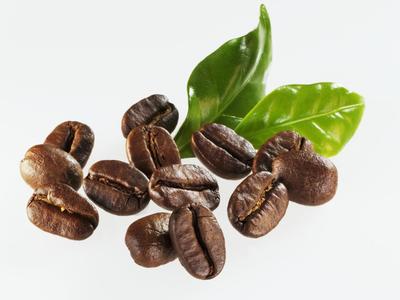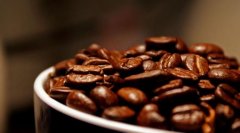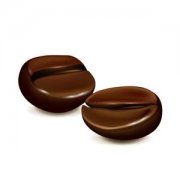Alida Manor Sun (Elida Natural) Pocket Alida Manor (Elida) introduction

These specialty coffees are grown on nutrient-rich, well-balanced soil in the Baru volcano region. The microclimate of the Panamanian highlands is the most important resource that makes Panamanian coffee unique. The most important resource that makes Panamanian coffee unique is its microclimate. Panama's east-west environment allows cold air currents to flow through the Central Mountains and converge above 6500 feet, thus creating a variety of microclimates in the Boquete and Volcán-Candela regions, making them the main producers of Panamanian coffee.
Elida Manor
[Name]: Elida Natural
[Origin]: Boquete
[Manor]: Elida Manor
Catuai 85%, Typica & Bourbon 15%, Geisha (small amount)
[Treatment method]: Sunlight (Natural)
[Altitude]: More than 1800 meters
[Planting soil]: Volcanic clay
Flavor Description: Tropical fruits, spices, nuts, milk chocolate
The farm dates back to 1918 and is owned by the Lamastus family, and the name Elida is the name of the farmer, Mrs. Robert Louis Lamastus. Elida Estate is located in Boquete producing area. The elevation of the estate is almost the highest in Panama, and nearly half of the area is in the National Protected Park. It is a rare ultra-high altitude estate in Central America! Elida Estate has a total area of 65 hectares, more than half of which are located within the Baru Volcano National Park, 30 hectares of which are planted with coffee trees and the remaining 35 hectares are virgin forests. Coffee is grown at altitudes ranging from 1670 to 1850 meters, making it one of Panama's two highest coffee estates (the other one at this altitude would be Carmen Estate in the Vulcan Valley).
The rugged Baru is a young volcano, more than 3,400 meters above sea level, belonging to the active volcano, surrounded by seven different micro-climate zones, brewing a rich and diverse ecological environment, and Elida estate straddles one of them. The diverse micro-climate has advantages and disadvantages for coffee cultivation. In Elida's case, her flavor is stronger and more varied than most Panamanian coffee. Of course, the terrain of high altitude also has disadvantages. Due to the large temperature difference between morning and evening, the coffee of Elida Manor needs 5 years of care to usher in the first harvest after sowing. The waiting period for receiving is quite long (usually only 3 years for coffee in the producing area). Although the plant grows slowly, it has a very good help for the development of coffee flavor. After entering the harvest period, due to the relationship between temperature coffee ripening period is often more than a month, ripening eve once blowing hurricane, heavy rain and other irresistible factors come, knowing that will cause significant losses, but because the beans do not reach the manor harvest standards, in the quality of the insistence, refused to rush to harvest and lead to a sharp decline in harvest! The risks are actually much greater than other low-altitude estates.
Elida Manor mainly has three varieties planted, namely Catuai (Catuai), Typica (Iron Pickup) and Geisha (Guixia). The processing plant of the manor is located halfway up the mountain. After coffee is picked, it can be transported to the factory for processing as soon as possible to ensure that the quality of coffee fruit is not affected. Elida's environment is also suitable for growing other high-quality temperate crops, especially tree tomatoes and some unusual high-altitude fruits. Interestingly, the taste of these fruits can often be found in Elida's coffee.
In addition to the exceptional high altitude and microclimate, the owner of the estate, Mr. Wilford, has also made considerable efforts in harvesting and processing. In order to achieve the highest standards, Elida Manor coffee only allows hand-picked ripened coffee fruits (Ripe on Pinton). The high maturity of the fruit and the naturally high sugar content of pectin are also the basis for producing Elida's high quality flavor.
In addition to being extremely strict with coffee cultivation, Mr. Wilford, the owner of the estate, is also more rigorous than the same industry in the purification of green beans after processing. For Panama Elida, after processing green beans, it needs to go through low temperature Resting for more than 5 months. This can make the coffee flavor have a more balanced and full development. (Low temperature Resting is a concept of green bean purification that was vigorously promoted by coffee master George Howell in 2006. We found that green beans in subtropical areas need to be placed at low temperatures, but different treatments and altitudes will change the time of low temperature Resting. For Panama Elida, 5 months of low temperature Resting is the best.)
Cups expert Ken Davids scored Elida Manor coffee 93 points in 2012! Elida is also a regular participant in the World Barista Competition (WBC). In Taiwan TBC (Taiwan Barista Competition) and China CBC (Chinese Barista Competition) finals, it is often seen that contestants use a single Elida to make SOE concentration.
Elida, La Esmeralda and Kotowa Duncan have been ranked as one of Panama's three largest estates due to their unique geographical conditions and Mr. Wilford's persistence in coffee quality.
Important Notice :
前街咖啡 FrontStreet Coffee has moved to new addredd:
FrontStreet Coffee Address: 315,Donghua East Road,GuangZhou
Tel:020 38364473
- Prev

Unique Panamanian Coffee Casa Luis Estate Flavor Profile
Unique Colombia Red Wine Treatment Colombia Manor: Nubian NUBIA, ANATOLI3-
- Next

A brief introduction to the semi-washing treatment of Coffee Cherry in Carmen Manor, Panama
These unique coffees are grown in nutritious and balanced land located in the Baru volcano region. The microclimate of the Panamanian highlands is the most important resource that makes Panamanian coffee unique. The most important resource that makes Panamanian coffee unique is its microclimate. The east-west environment of the Republic of Panama allows cold air to flow through the Central Mountains and converge in 6500.
Related
- Does Rose Summer choose Blue, Green or Red? Detailed explanation of Rose Summer Coffee plots and Classification in Panamanian Jade Manor
- What is the difference between the origin, producing area, processing plant, cooperative and manor of coffee beans?
- How fine does the espresso powder fit? how to grind the espresso?
- Sca coffee roasting degree color card coffee roasting degree 8 roasting color values what do you mean?
- The practice of lattes: how to make lattes at home
- Introduction to Indonesian Fine Coffee beans-- Java Coffee producing area of Indonesian Arabica Coffee
- How much will the flavor of light and medium roasted rose summer be expressed? What baking level is rose summer suitable for?
- Introduction to the characteristics of washing, sun-drying or wet-planing coffee commonly used in Mantenin, Indonesia
- Price characteristics of Arabica Coffee Bean Starbucks introduction to Manning Coffee Bean Taste producing area Variety Manor
- What is the authentic Yega flavor? What are the flavor characteristics of the really excellent Yejasuffi coffee beans?

